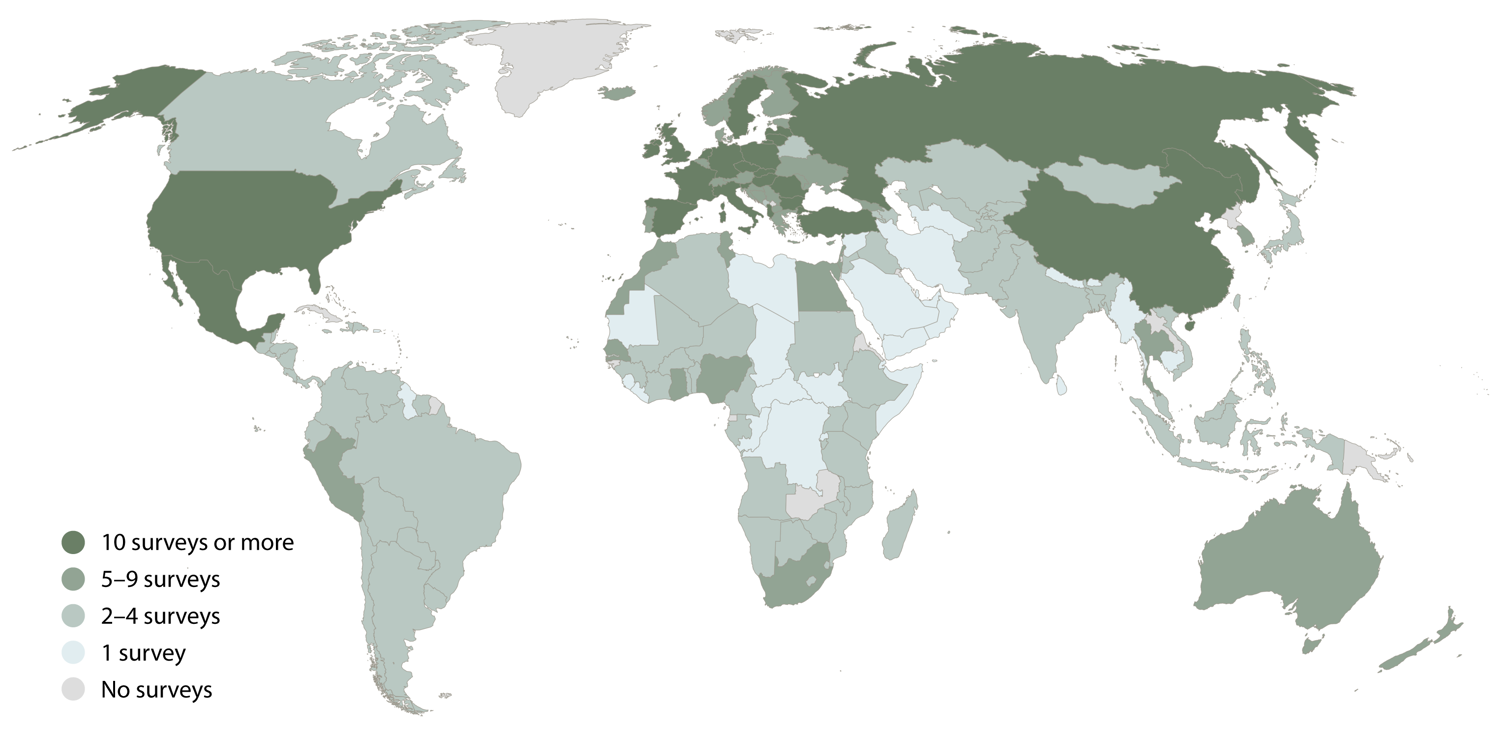
Scientists who study migration often use surveys about people's aspirations, desires, or plans to migrate. Over the past decades, hundreds of thousands of people worldwide have responded to surveys that contain such questions.
The resulting data help understand the underlying forces that create migration pressure, even when people are unable to actually migrate. Such analyses are important in a world where obstacles to crossing borders make migration difficult and dangrous.
PRIO researchers Mathilde Bålsrud Mjelva and Jørgen Carling have carried out the first systematic mapping of survey data on migration aspirations and similar concepts - that is, information about people's thoughts and feelings about migrating to another country.
They found 212 surveys and compiled information about the type of questions that were asked, the population that was targeted, and many other features of each dataset. The mapping was part of the recently completed QuantMig project, led by the University of Southampton, and has been published as an article in Open Research Europe.
A striking finding was that there is more, and more detailed, data for high-income countries. The United States, the United Kingdom, and Romania top the list of countries that are covered by the greatest number of surveys. In regions where diverse hardships make a large share of the population consider leaving - such as much of Africa and South Asia - data is comparatively scarce.
The map shows the number of surveys carried out in each country worldwide, from 1990 to 2021, ranging from 30 in the United States to zero in Laos, Zambia, and several other countries. In some cases, these are surveys that cover many countries and include just a couple of questions about migration.
The mapping also found that when data exist, they are often inaccessible. In just a quarter of the cases the data were said to be available to other researchers. And even then, access to the data was often dependent on paying a fee or having the request processed by an individual researcher, who might, of course, have moved on, retired, or otherwise not be reachable anymore.
Another disappointing and surprising finding was that the researchers who use survey data in their publications often fail to provide basic information about the data and how they were collected. For instance, it was sometimes impossible to find out exactly how questions were asked in a survey, even when the resulting data were central to the analysis.
This mapping of survey data is connected with a number of ongoing research activities at the PRIO Migration Centre. The MIGNEX project has collected in-depth survey data on migration aspirations in 25 communities across Africa, the Middle East and Asia and will make the data freely available in August 2024.
Another current project, Future Migration as Present Fact (FUMI), further advances the theory and methodology for understanding people's thoughts and feelings about migrating.
Both projects also analyze data in order to understand what makes people in diverse situations see migration as a promising path to a better life. Via the project websites you can sign up to be notified of new findings from FUMI and MIGNEX.
In order to promote good survey research, the PRIO Migration Centre has twice offered a three-day PhD course on survey methods in migration research, made possible with funding from the Research Council of Norway and the Norwegian Agency for Development Cooperation.





